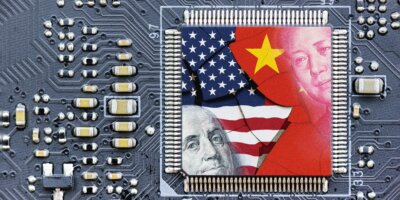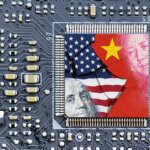
Working in the semiconductor industry is an experience that is worth pursuing. (Source – Shutterstock)
Building a career in the semiconductor industry
|
Getting your Trinity Audio player ready... |
The semiconductor industry is one of the fastest-growing industries in recent times due to the increasing demand for chips. In the first half of 2023 alone, investments in the semiconductor industry have skyrocketed with chip companies announcing plans to build new fabs all over the world.
In fact, market sales in the semiconductor industry are forecast to reach a value of US$1 trillion by 2030 or sooner if demand continues to grow. As new fabs are built, there will be increased demand for talent and skills to work in them as well. While technology today can automate most processes in fabs, there is still a need for human skills to manage them.
For example, in the United States, official estimates suggest that companies across industries will face a shortfall of 300,000 engineers and 90,000 skilled technicians by 2030. The booming Indian semiconductor industry will also see a creation of 80,000 roles that needs to be filled up in the near future.
Here’s where it can get complicated. In the past, employees in the semiconductor industry would only need skills that are relevant to chip design and production. This includes studies in the field of engineering and physics. However, the increasing adoption of emerging technologies like artificial intelligence in fabs and future ones means the workforce will not only need to have skills on semiconductors but also relevant IT skills to deal work with the technology.
Speaking to Tech Wire Asia, Avinash Srinivasan, a Senior MDE and Lead for Electron Optics at KLA Corporation, said the employment journey in the semiconductor industry has become a lot more exciting than what it used to be. While some may find the roles more challenging, the adoption of technology has actually allowed the workforce to build their skills and be more efficient in their roles.
Srinivasan, who is also the inaugural recipient of the SEMICON Southeast Asia 2023 Emerging Young Leader Award, has worked at KLA since 2017. He has led technical teams in Singapore and the United States to address complex technical challenges to meet the short and steep ramp of a strategic product during the COVID-19 pandemic.

Avinash receives the first Young Leader Award from Linda Tan, president, SEMI Southeast Asia.. (Source – KLA)
“Talent can be very tricky today because, in the semiconductor industry, one requires training in semiconductors or electronics or basic engineering or physics. On the other hand, AI in the picture, requires workers to be good at the computing side of things. For example, if I take a random sample of 10 people from my engineering team, almost everybody will have a background in physics or engineering. Down the line, there will be hybrid teams in my opinion. A lot of people from the computing side will probably do IT-oriented work, which at the moment, the semiconductor industry is not hiring a lot,” commented Srinivasan.
Srinivasan believes this will be changing. Semiconductor companies will look to hire more algorithm engineers and big data analysts to complement the talent and capabilities they currently have. Hence, he foresees the entire hiring landscape and process in the semiconductor industry evolving.
“If a company was previously looking at say Faculty of Engineering of a university, they’ll now also be looking at the School of Computing and School of IT as well as those in high-performance computing centers to complement and have that rounded mix of people to support the entire flow,” he said.
It all comes down to education and interest in the semiconductor industry
Srinivasan, who has a Ph.D. from the National University of Singapore (NUS), is also a guest lecturer for Master of Science courses at NUS. When he lectures his students, he feels the general trend in students today is that most of them are interested in roles in big tech companies like Amazon and Google, despite the challenges those industries as facing.
Yet, he pointed out that there are still students that are really interested in the field of semiconductors and would go on to pursue a career in it. But the reality is, the number of students remaining in the field is still not as high as it should be.
“The talent shortage is there and there is a general dwindling of interest in STEM – science, technology, engineering and mathematics. I know the Singaporean government is working very hard in order to correct is because they really want people to go towards STEM education. I know a lot of other countries, especially developed countries have initiatives in order to take students back into STEM research. I find a lot of industry leaders talking about the main issue that they have is talent. But the fact that a lot of bright minds still going into the engineering side of it is the shining side of this or the bright side of this scenario.
In my opinion, that is a problem. But that has to be addressed organically and bottom-up, which means you have to encourage students or tell students to get to students at a very young age. This is something that the KLA Foundation does. We work with schools and universities by giving students science kits and ensuring demonstrations and conduct contests, so that children aged between 10 to 12 years students are interested in the field, and they get more and more interested in STEM education,” explained Srinivasan.
With that said, Srinivasan feels that working in the semiconductor industry is still worth pursuing. It may not be as exciting as a role in a big tech company, but it does promise fulfillment to those that are looking to be part of an industry that will only continue to grow in the years to come.
READ MORE
- Safer Automation: How Sophic and Firmus Succeeded in Malaysia with MDEC’s Support
- Privilege granted, not gained: Intelligent authorization for enhanced infrastructure productivity
- Low-Code produces the Proof-of-Possibilities
- New Wearables Enable Staff to Work Faster and Safer
- Experts weigh in on Oracle’s departure from adland


